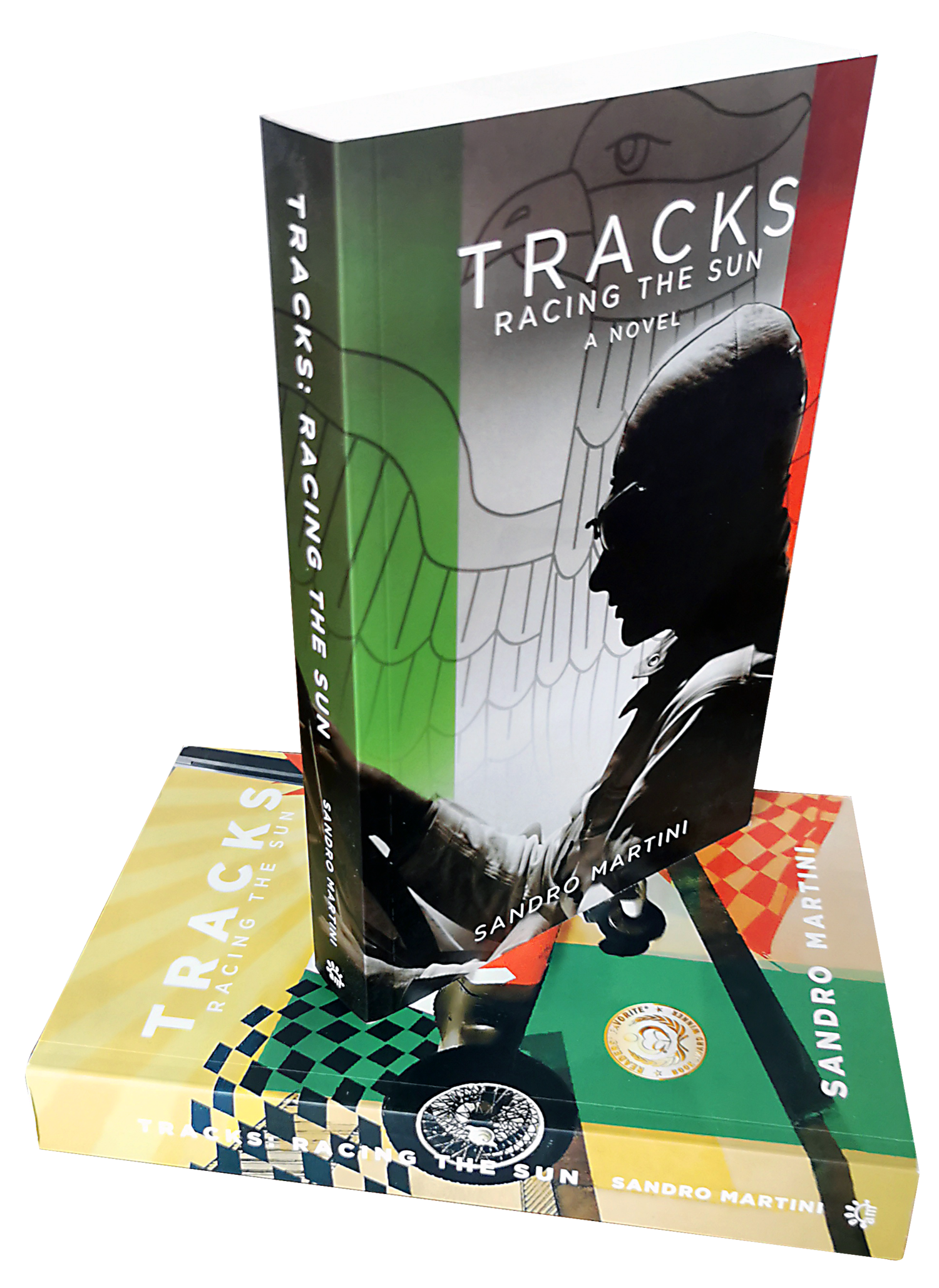"Motor-racing is the only modern sport: Yes like other sports it pits man against man and the spiteful and often willful spirit of Fortune, but it is, ultimately, our marvelously damned attempt to dominate that which has no spirit that defines our sport as modern. It is man’s vainglorious attempt at defeating that which he has created in his own image—by nature both violent and fast—and testament to our desire to imitate the Father in dreaming of mortals possessed of a spirit able to arrest the mechanical carnage assured by our gun-metal past. It is, motor-racing, the metaphor of our age. Life, death, and fate enmeshed in that most human belief of a better tomorrow despite the dead-sure knowledge that a machine has no pity, feels no remorse, and will kill the brave and the the good and the cowardly and the evil with equal indifference.
"We in Italy invented the automobile, both word and concept. It was in the 14th Century that the Sienese artist and engineer Simone Martini conceived of a 4-wheeled vehicle—powered by men—he dubbed an auto (from the Greek for ‘self’) mobile (from the Latin for ‘to move’). It may have taken us a further 300 years, but eventually we got around to translating Martini’s fantasy into reality with the first motorized automobile, too. That honor falls, depending on your way of thinking, either to Murnigotti in 1876, or Enrico Bernardi who, in 1880, affixed an internal combustion engine to his son’s tricycle.
"We in Italy, moreover, provided the world with the first true stylists of the wheel, two men who defined how a grand prix car should be raced at speed. They are, to offer a parallel inconvenient and yet palpable, analogous to the first men to ride a bicycle, from whence we must distinguish the initial (English) pioneers and those (Italian) who perfected the art of riding that machine at speed and in competition. From these two stylists of the wheel stem, logically, the legendary names of Boillot, Werner, Constantini, Benoist, and—if it is permitted—those who we have lost, those heroes (always present!) who were slain by the machine that cares for nothing but blood, Antonio Ascari, Pietro Bordino, Gastone Brilli-Peri, Emilio Materassi, along with those who are still with us, winning prestige and honor for our nation week-in week-out around the world, Giuseppe Campari, Baconin Borzacchini, Clemente Biondetti, Luigi Fagioli, Nando Minoia. And in this discussion, we must end with the two men who currently stand unequalled and unparalleled in the world of speed, the unconditional progenies of those two proto-stylists of the wheel, Felice Nazzaro and Vincenzo Lancia—‘the Flying Mantuan’, Tazio Nuvolari, and ‘the Nobleman from Galliate’, Achille Varzi.
"It was the belief of the ancients that the universe is divinely balanced: It is the Chinese who see life as balance between yin and yang, Hegel who will have his thesis and antithesis. And it is Varzi who will—must—have his Nuvolari as Lancia had his Nazzaro.
“Where Nazzaro was precision and patience, Nuvolari is adventurous and brave, fire and guts: Where Lancia was impetuous and free-spirited, Varzi is disciplined and organized, shrewd and precise. Varzi, like Nazzaro, is the consummate professional. To see him drive is to witness the fluidity between man and machine that is a seamless metaphor of modernity. His method emboldens the future—scientific, methodical, devoid of emotion, focused solely on the result. Behind the wheel he is calmness personified, never phased, never rushed, always smooth, always soft. On comparing him to others—such as the highly-rated Italo-German, Rudi Caracciola—one almost expects Varzi to be the slower; and yet there exist few challengers to Varzi’s dominance of the international racing scene. It is testament to his supreme ability that, despite being a consistent winner of grands prix since his debut in 1928, he has never suffered a serious ‘off’. One sometimes wonders what kind of pace he would be capable of should he abandon his vigilance and give speed its head. But such thinking for Varzi is irrational, anathema—what need to challenge one’s mortality when one can compete—triumph—safely within one’s spirit?
"Where Achille Varzi is technique, Tazio Nuvolari remains—being his natural antithesis—pure reaction. The survivor of multiple shunts that would have seen a man of lesser providence dead (and a man of lesser fortitude retired), he has developed a tail-happy style in the tradition of Vincenzo Lancia and yet uniquely his own: His furious drifts allied to a consistently attacking demeanor does not capture, it is true, the spirit of the modern, but neither does it reflect back to the past despite his firm Catholic belief and traditional way of life: He is a force of nature, fearless and committed, a metaphor not of modernity, but of modern Italy.
“We have much to look forward to then as the grand prix circus begins its familiar tour of Europe: The Mille Miglia early in the spring (won this year by Nuvolari over Varzi) followed by the Targa Florio, Monaco, Spa in July, the Nürburgring in the dog days of summer, and our own Italian Grand Prix at Monza in the early autumn (while not forgetting the French Grand Prix slotted in somewhere between the summer or autumn, depending, as ever, on the whims of the Gallic disposition)."
—Johnny Finestrini



